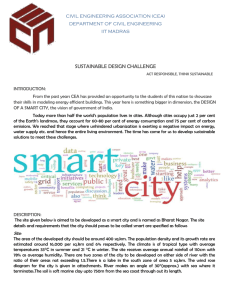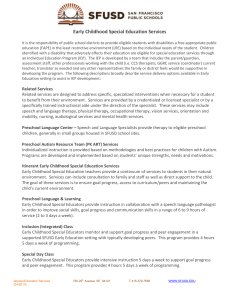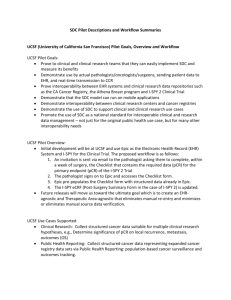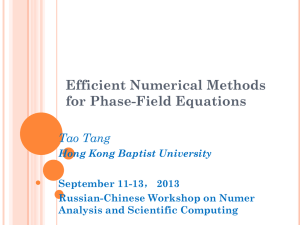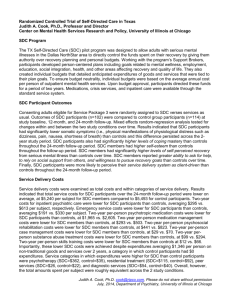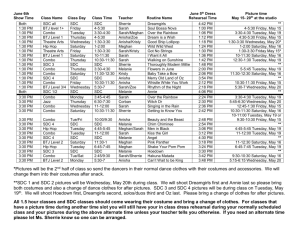Impact & Innovation Awards 2013
advertisement
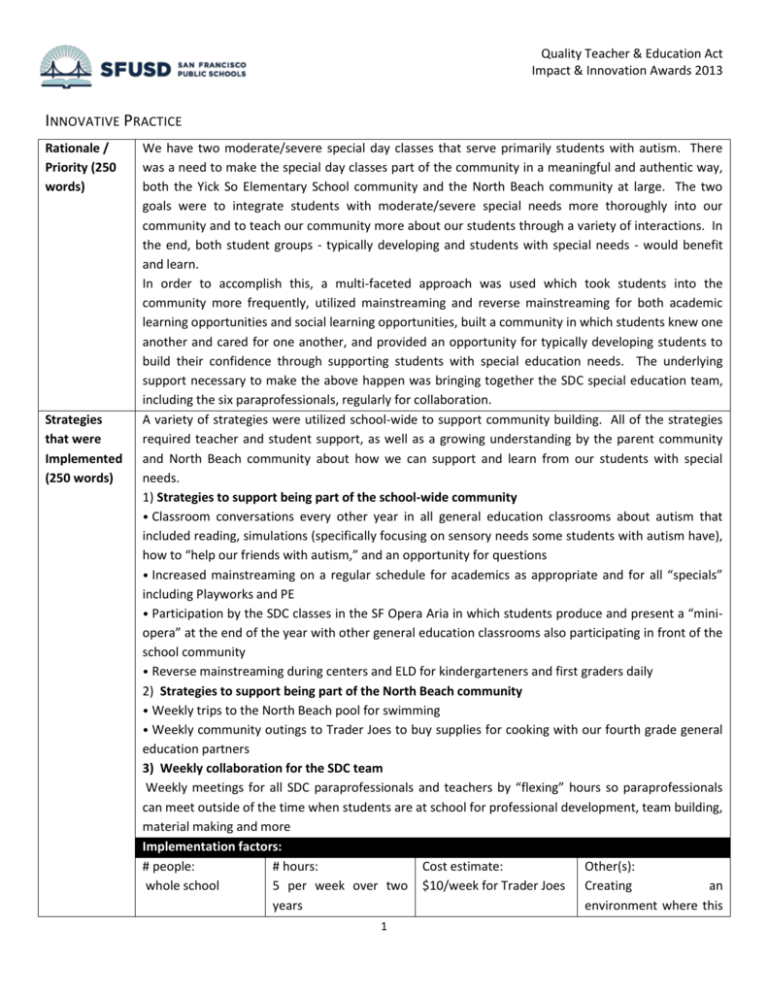
Quality Teacher & Education Act Impact & Innovation Awards 2013 INNOVATIVE PRACTICE Rationale / Priority (250 words) Strategies that were Implemented (250 words) We have two moderate/severe special day classes that serve primarily students with autism. There was a need to make the special day classes part of the community in a meaningful and authentic way, both the Yick So Elementary School community and the North Beach community at large. The two goals were to integrate students with moderate/severe special needs more thoroughly into our community and to teach our community more about our students through a variety of interactions. In the end, both student groups - typically developing and students with special needs - would benefit and learn. In order to accomplish this, a multi-faceted approach was used which took students into the community more frequently, utilized mainstreaming and reverse mainstreaming for both academic learning opportunities and social learning opportunities, built a community in which students knew one another and cared for one another, and provided an opportunity for typically developing students to build their confidence through supporting students with special education needs. The underlying support necessary to make the above happen was bringing together the SDC special education team, including the six paraprofessionals, regularly for collaboration. A variety of strategies were utilized school-wide to support community building. All of the strategies required teacher and student support, as well as a growing understanding by the parent community and North Beach community about how we can support and learn from our students with special needs. 1) Strategies to support being part of the school-wide community • Classroom conversations every other year in all general education classrooms about autism that included reading, simulations (specifically focusing on sensory needs some students with autism have), how to “help our friends with autism,” and an opportunity for questions • Increased mainstreaming on a regular schedule for academics as appropriate and for all “specials” including Playworks and PE • Participation by the SDC classes in the SF Opera Aria in which students produce and present a “miniopera” at the end of the year with other general education classrooms also participating in front of the school community • Reverse mainstreaming during centers and ELD for kindergarteners and first graders daily 2) Strategies to support being part of the North Beach community • Weekly trips to the North Beach pool for swimming • Weekly community outings to Trader Joes to buy supplies for cooking with our fourth grade general education partners 3) Weekly collaboration for the SDC team Weekly meetings for all SDC paraprofessionals and teachers by “flexing” hours so paraprofessionals can meet outside of the time when students are at school for professional development, team building, material making and more Implementation factors: # people: # hours: Cost estimate: Other(s): whole school 5 per week over two $10/week for Trader Joes Creating an years environment where this 1 Quality Teacher & Education Act Impact & Innovation Awards 2013 is expected Demonstrated Application & Measurable Outcomes (400 words) Sharing Best Practice (250 words) Education researcher J.P. McDonald talks about “sightings” as a way for educators to see a trend emerge. These “sightings” take the form of conversations, actions, demeanors, and more that are evidence of an emerging trend. At our site, there are many of these “sightings” that show how our SDC classes are now a part of our community, both the school community and the North Beach community, as well as the importance of weekly collaboration by our SDC team. 1) Evidence to support integration within the school-wide community • General education students asking to sit with students in the SDC classes during lunch • General education students referring to students in the SDC classes by name • General education students responding to non-verbal requests for play by students in the SDC classes by playing with them • General education teachers inviting SDC classrooms on field trips and to join them for “specials” (PE, Playworks, etc) and classroom events • General education teachers inviting students in the SDC who are mainstreamed regularly into their room for additional lessons they think they would enjoy and coordinating mainstreaming with paraprofessionals who support students during mainstreaming • The school site council asking for updates on mainstreaming and reverse mainstreaming • Parents reporting to the principal that they are so happy their kinder student “gets to be a part of “ reverse mainstreaming and other parents requesting their child be a part of it • The norm that mainstreaming and reverse mainstreaming occur for ELD, centers and more • Students in the SDC partaking in the ExCEL after school program 2) Evidence to support integration within the North Beach community • North Beach pool calling to let the school know when they will be open or closed for construction • Interaction by Trader Joes employees with our students 3) Weekly collaboration by the SDC team • SDC paraprofessionals asking for collaboration time outside of when students are present so they can better support IEP goals • SDC pararprofessionals “flex” their hours by coming in two hours late every other week on Wednesdays - skipping swimming sessions - so we can have a weekly after school collaboration meetings Support teachers (SLP, PT) and parents coming to swimming sessions weekly so we can have these weekly meetings Just as we have learned from many schools, we believe many schools can learn from our practices. The community outings (soon to Chinatown for shopping too) are something any school can do and provide an opportunity to work on IEP goals within a larger context for students to generalize. Integrating our SDC classrooms into our school in a meaningful and authentic way is something many schools strive to do and something we continue build on with the progress we have made. The message it sends is important, but the skills learned through this by both typically developing students and students with autism are life-skills we all strive to teach our students. Finally, the struggle leaders have is figuring out how to support the professional development of our SDC teams when our paraprofessionals are only paid to be at our school for 5.5 hours per day and students are at the site for 6 hours. This leaves 2 Quality Teacher & Education Act Impact & Innovation Awards 2013 no opportunity for collaboration time when students are not present. The flexible hour solution was mutually agreed upon and has been well received by SDC teachers, paraprofessionals, and school administration alike and we are confident it is leading to better service to our students. I would invite schools to come visit to see our practices at Yick Wo Elementary School and to share their practices with us. The most “novel” practice of creating time for SDC paraprofessional collaboration is something that could go out to sites via email so they could see an example of how this may work for their site. 3

